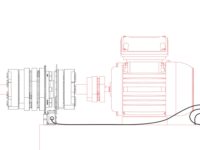If you don’t measure it, you can’t control it.
The torque testers of today can offer so much more than just measuring the twist-off torque of a bottle top. They can measure a wide variety of products and materials, communicate on multiple levels and be effortlessly integrated into automated manufacturing environments.
It has been proven time and time again that it pays to invest in testing. Torque testing ensures product and device manufacturers achieve consistently high standards. In the medical industry for example, where torque is a key factor in the successful operation of many medical devices, this has the multiple benefit of safeguarding the patient, the medical staff and the reputation of the company that makes the device. In such a highly regulated industry it enables the manufacturing processes to be tightly controlled and validated, providing the basis for ongoing process and quality improvements.
Today’s torque testers are much different than the old ones. Modern torque testers have touch screen interfaces with sophisticated yet user-friendly software, which include libraries of standard calculations, but they still remain simple enough to be operated by pressing a single button. They can be used as standalone test solutions, but some will go further and allow integration with existing automatic manufacturing environments. They have digital connections that can interface with programmable logic controllers (PLCs) that control automated processes. They can provide test results to statistical process control (SPC) software that allows the PLC, or operator to make decisions based on real-time results. Through proper integration of product testing, the automated system can safely be left unattended to perform all the required tests, freeing up operators to perform other important tasks, and removing the need for manual writing or inputting of test results, thus keeping the integrity of data intact.
The flow diagram here shows a typical manufacturing scenario. Central to everything is the PLC, instructing a “pick and place” system to take a sample product from the production line and load it into the torque tester which, upon instruction from the PLC, will perform the test, send the result to the SPC package and tell the PLC that the test is complete. The sample will then be removed and the process repeated—automatically.
With the right console-controlled torque tester, both static and rotary torque tests can be performed at the push of a button or even automatically, and being a standalone system means no separate PC is required, making it ideal for production areas.
Typical torque testing applications include:
- Medical devices: assessing the torque of rotary luer connectors and measuring the torque of dosage selection of pen injectors.
- Packaging: testing child-resistant closures (CRC) on pharmaceutical containers, tamper-evident closures on PET bottles.
- Automotive: measuring the force needed to open rotary controls and switches.
Industry experts predict that there will be an increased demand for torque testing in future with “openability” becoming a growing issue as people live longer and find it harder to open packaging as they become less dextrous.
There is no doubt that for today’s manufacturers, openability is a key performance criteria starting with the initial design of a product right through to its production and packaging. Automated torque testers offer a cost-effective solution to quantifying the performance of a wide variety of components and devices across all industries but when it comes to our old friend the bottle-top in the packaging industry there’s nothing better to evaluate opening and closing forces on tamper-evident closures—even more so when it’s part of an automated process.


